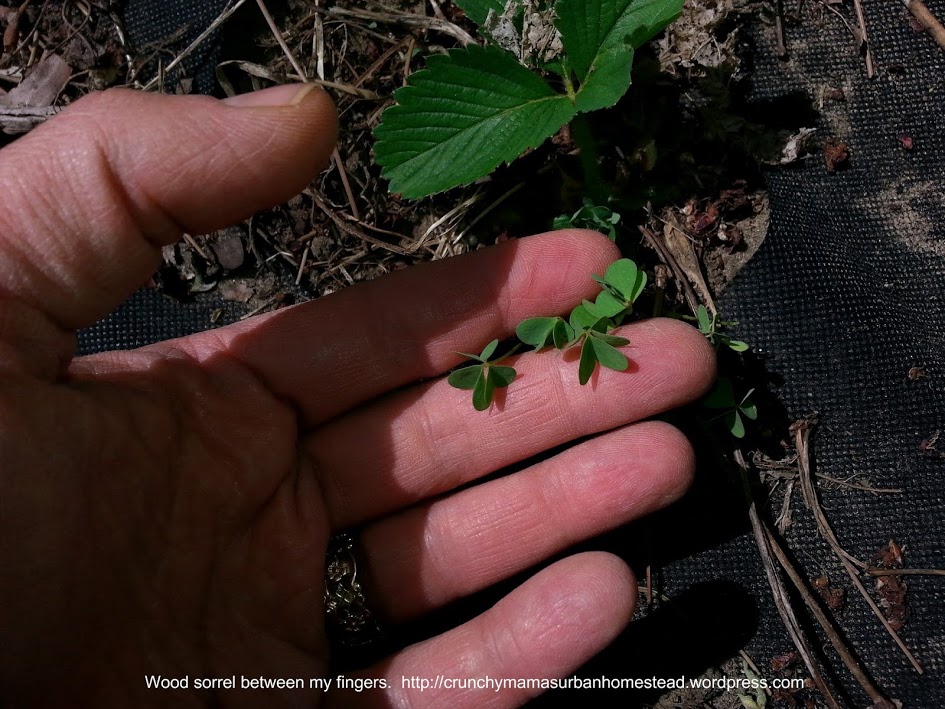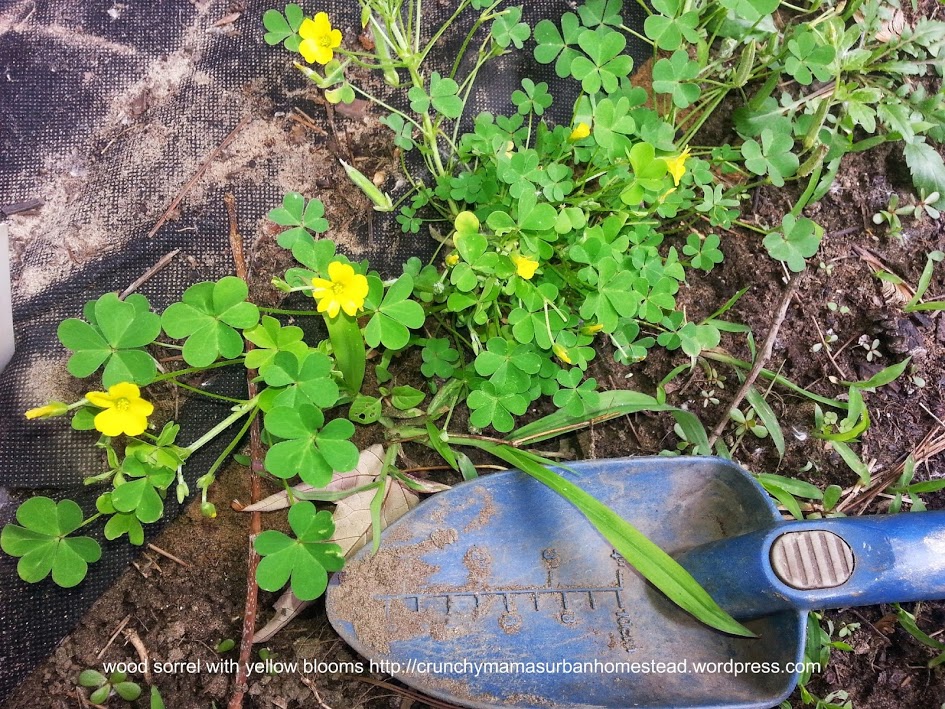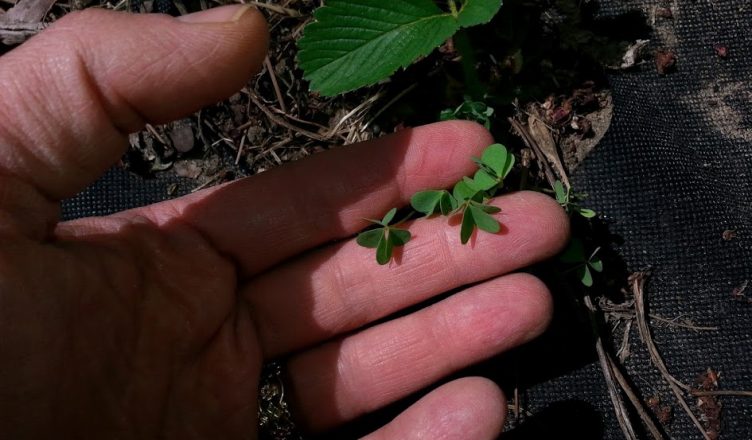Crunchy Mama, one of our guest contributors, serves up another wild food you should add to your hunt-gather-eat list. Be sure to check out her bio at the end of the post on how she and her family are doing the stuff!
DISCLAIMER: This information is offered for educational purposes only. Do your own due diligence before foraging wild edibles of any kind.
Green Sour Butterfly Leaves (Wood Sorrel; Oxalis) — Crunchy Mama’s Wild Edible Adventures
BY THECRUNCHYMAMACHRONICLES – Guest Contributor
Greetings, friends! Next up in my wild edibles series is wood sorrel. Wood sorrel might be mistaken by new foragers for clover but after reading this post you will know how to distinguish it from clover. It is similar to clover in that it has three small leaves coming from the end of a small stem. Wood sorrel, however, has three heart-shaped leaves and the veins in the leaflets radiate out from the base whereas clover has three egg-shaped leaves and the veins in the leaflet come out from various points from the center vein. The wood sorrel flowers have 5 petals and the clover flowers have “lots of tiny pea-like flowers clustered together on flower heads” (Kallas). Click here to see images of clover flowers. Both clover leaves and flowers and wood sorrel leaves and flowers are edible but the taste difference is very distinct.

Wood sorrel has a bright, sour, lemony flavor. Clover does not have this sour flavor. The sour flavor comes from a mixture of acids including oxalic acid; a common warning to those with kidney problems, gout, etc. is that they should avoid plants with oxalic acid. Everyone should be aware that consuming vast amounts of foods with oxalic acid might cause problems (see below for more links regarding oxalic acid). Many “normal” foods have oxalic acid but there are no big warning labels on them regarding oxalic acid (spinach, swiss chard, and beet greens, okra, figs, peanuts to name a few, according to http://juicing-for-health.com/oxalic-acid.html). John Kallas writes, “[i]n spite of many authors claiming so, oxalates are not a problem for normal healthy humans eating a normally diverse diet.” You will need to do your own research and decide what works for you. One of its nutritional benefits when consumed as part of a varied diet and in moderation (whatever THAT means — sarcasm) is that it is high in vitamin C. Another source says that it is high in vitamin A. Kallas reports that it is high in iron and calcium.

Other names it might be called are: sour grass, shamrock (although clovers are sometimes called shamrock so I would avoid calling wood sorrel shamrock), yellow oxalis, sour clover, or oxalis (after the genus that it belongs to).
Additional resources for learning more about wood sorrel:
John Kallas’ Edible Wild Plants pages 177-190 (This book is one of the BEST books on wild edibles! Go read the reviews!)
Green Deane’s http://www.eattheweeds.com/sorrel-not-a-sheepish-rumex/
Steve Brill’s http://www.wildmanstevebrill.com/Plants.Folder/Sorrel.html
http://www.american-lawns.com/problems/weeds/wood_sorrel.html
http://kingdomplantae.net/yellowWoodSorrel.php
http://www.botanical.com/botanical/mgmh/s/sorwoo68.html
More reading on oxalic acid:
http://juicing-for-health.com/oxalic-acid.html (“ORGANIC oxalic acid is essential for our body. It is the INORGANIC form of
oxalic acid that we need to be aware of.”)
http://www.drweil.com/drw/u/QAA400344/Avoid-Vegetables-with-Oxalic-Acid.html
Thanks for reading! If you enjoyed this post, please consider signing up for updates to her blog or following her on Twitter.com/@TheCrunchyMama)!
Author bio: The Crunchy Mama is a libertarian unschooling mama to three sons, married to her husband since 1998. They live on their Midwestern homestead of 2 ½ acres with chickens, ducks, dogs and an ever-growing organic vegetable garden. She is an avid wild food eater. In general, she’d rather be outside enjoying creation. She can be followed on Twitter @thecrunchymama or on her blog Crunchy Mama’s Urban Homestead.




